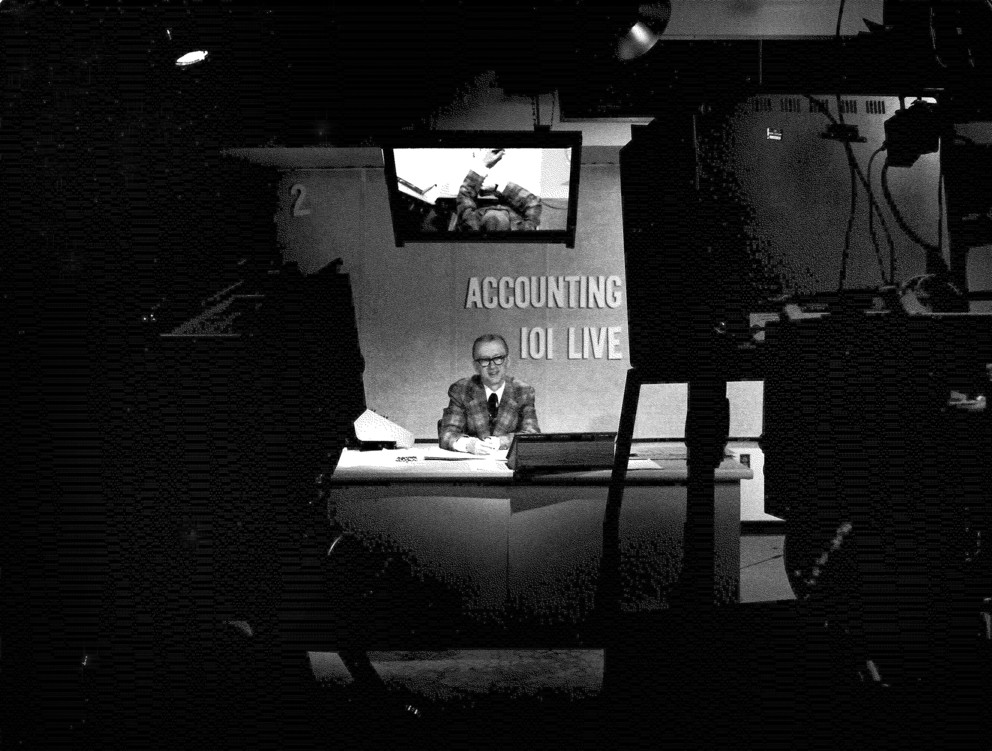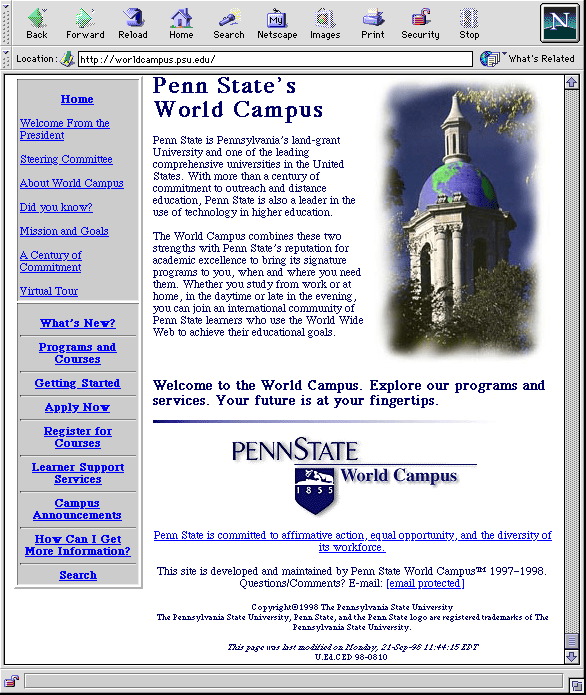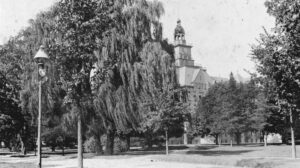Our leadership in distance education dates back to 1892, when Penn State, the University of Chicago, and the University of Wisconsin became the first American universities to offer university-level correspondence study courses. Although Penn State no longer offers correspondence courses, it is an important element of our history and set the stage for all that has followed.
Correspondence Courses
Thanks to the United States Postal Service’s Rural Free Delivery program, which delivered mail at no cost to rural homes, Penn State was able to begin offering agriculture courses through the Home Reading Program in Agriculture. The program offered low-cost correspondence courses in a range of agricultural production disciplines, along with courses designed to help families improve the quality of domestic life.
The program included some high school and noncredit training programs, but the majority of courses were versions of undergraduate courses that carried the same credit value as their on-campus counterparts. Students could apply courses to on-campus degree programs or earn associate degrees, and ultimately a small number of baccalaureate degrees, entirely at a distance.
Over time, the University created a separate central division — Independent Study by Correspondence — that provided design and editorial support for faculty, test proctoring services, and student registration and advising support for students around the world. The Student Services unit advised adults and not only helped them overcome personal barriers to continuing their studies, but also helped arrange for delivery of books, study guides, and other media.
From College of Education courses that helped teachers maintain professional certification to College of the Liberal Arts credit courses, correspondence courses were designed for students to study at their own pace and interact with instructors through written assignments. Correspondence instruction was especially convenient for the military, traveling workers, incarcerated individuals, and women trying to balance education with parenting, home management, and a job.
As correspondence studies became more popular, other state universities came together through the National University Extension Association (now UPCEA — the University Professional and Continuing Education Association). Together, they launched a unified course catalog that was used by employers and the military to find courses for employees. They also shared course content, licensing the use of materials to each other to reduce the cost of course development. And, when out-of-state students needed to take a final exam, it was not unusual that a peer university in the student’s home state would proctor the exam.
Thousands of people would go on to take correspondence courses. By the end of the 1920s, 38,000 people had taken at least one course via correspondence at Penn State.
Media-Based Distance Education
The development of broadcasting technology paved the way for Penn State to expand distance learning, starting in the 1920s, when the University opened a high-power radio station to offer live radio courses to students as far away as California.
In the 1950s, in response to the rapid growth in the number of postwar students through the G.I. Bill®, Penn State developed a live instructional television network that connected 24 classrooms with a one-way video feed and two-way audio transmission of courses to allow one faculty member to teach students in multiple classrooms. The network was part of a new University Division of Instructional Services that supported faculty use of media, including video and film production studios, still photography, and testing.
In 1965, the University launched its public television station, WPSX-TV (now WPSU-TV) and took video-based instruction into the community. WPSX-TV reached about 250,000 students in 22 Pennsylvania counties and produced for-credit courses, working with teachers to create instructional programs. Local programming, including the popular weekly current event series for grades 4–6, What’s in the News, was also produced with funding from the Pennsylvania Department of Education. What’s in the News was picked up for nationwide broadcast by the Public Broadcasting Service (PBS) and was seen in schools across the country.
In the 1970s, Sara Parks pioneered Penn State’s first distance-education degree program aimed at working food-service professionals for the College of Health and Human Development.
In the late 1970s, the creation of a statewide, 24-hour educational cable TV channel, PENNARAMA, led to much broader reach of media-based distance education, well beyond central Pennsylvania, and allowed the University to expand the number and variety of courses offered. The system evolved into the Pennsylvania Cable Network (PCN).

The Internet and World Campus
Penn State had begun to experiment with computer-based instruction on campus in the 1980s and decided in 1996 to shift all distance education activity to the internet. A study team chaired by James H. Ryan, Vice President for Outreach and Cooperative Extension, led the efforts to envision a “virtual campus” that creatively used technology to extend undergraduate, graduate, and certificate programs nationally and internationally.
With support from the Alfred P. Sloan Foundation, Penn State became one of the earliest adopters of online learning when it launched Penn State World Campus in January of 1998. Just five years after the release of the first web browser, World Campus launched with more than 40 students and five educational programs and, for the first time, moved the focus of distance education from individual courses to complete degree programs.
The University envisioned World Campus as an institutional delivery system that extends the programs and expertise of Penn State academic units through technology and associated student support services to any learner, at a time and place convenient to them — a revolutionary articulation of the land-grant mission at the time.

World Campus courses were designed so that students could get a Penn State education as long as they had a computer and internet access. Students took quizzes and exams online, participated in discussion forums, and used email to communicate with their instructors and advisers. World Campus not only helped better meet the needs of lifelong learners but also ensured a comprehensive infrastructure of student support services to ensure a quality learning experience.
World Campus added programs in the sciences, business, education, engineering, homeland security, liberal arts, and more in the 2000s as more people discovered the convenience of learning online.
Maintaining the success of 125+ years of distance education, Penn State Online Education and World Campus continue to innovate and coordinate the online vision for the University’s strategic plan.
